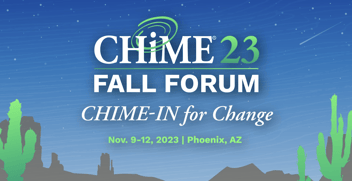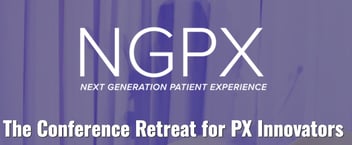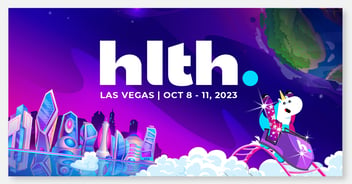HLTH: Collaboration, Innovation, and Exhaustion
Fall conference season is a busy time of year for healthcare. If you’re a vendor, like Gozio, you have resources on the move for about two months straight. A lot of time is spent reaching out to existing customers, prospects, the media, partners, and potential partners. It’s the time of the year to try to move things along and work on your brand building.
For healthcare organizations, it’s a good time to explore the solutions available to help you achieve your goals heading into the new year. If you’re a provider or a patient, it’s the time of the year to share your experiences and learn about new innovations. For patients, it can also be a little frustrating. While the presence of patients has grown over the years, it still isn’t as evident as it could be.
When I attend conferences like the ones I participated in this fall, I’m often busy setting up booths, prepping for presentations, and coordinating meetings. However, I do my best to attend some sessions and walk through the exhibit area, and I always look at these events both as a marketer and as a patient with a chronic condition. We don’t need to go into deep detail on that except to give a little context. I have a few different healthcare providers who prescribe the 12 different medications I take. They use different EHRs, and my imaging studies and labs often don’t get where they need to go. I take two immune-suppressing medications, so I get sick easily, but each of my providers give me different instructions. When I got COVID, it took almost a whole day to figure out what to do.
All that is just to say, I can tell when people are developing products and services that take the patient experience into account. I can also see the efforts to be more inclusive of patient stories and experiences. The same goes for being more inclusive of the unique experiences of women, people of color, and the LGBTQ community. When you struggle to execute the basics—like getting your mandatory shingles vaccine so you can start a new medication when you are apparently too young for it to be provided/covered—you can see between the lines more easily.
What I liked most about HLTH 2022 was the number of times I stumbled into something I was glad to come across. There were two events for women leaders in healthcare that gave me a chance to see some old friends, learn about new resources, and meet a few new people. I had a short break, and when I looked at the agenda, there was a panel session on women’s health that was able to attend. It was an interesting session, and a few key things stood out to me that I think we should all remember. I apologize in advance that I didn’t note who said what, but all four women on the panel were very eloquent and astute. The panel was Women Are Healthcare, and here were my three takeaways:
- As a nation, we are not doing very well at providing healthcare that is commensurate with what we pay for our healthcare. This is particularly true for women who often struggle to find appropriate care during big life transitions like menopause and childbirth.
- Femtech is moving from being very niche to being far broader to address larger issues in healthcare. Honestly, it was nice to get a better handle on all the femtech truly encompasses!
- To truly improve women’s healthcare and address disparities, we need to build trust with women, collaborate to fill the gaps, and always be thinking about the whole person across their entire life’s journey.
I love the sentiment, and it was great to hear about solutions that are intended to help improve healthcare for women of all ages. My only feeling was that many of them are being rolled out in urban centers in partnership with large health systems. For those of us in rural areas, it feels a bit like the promise of broadband for all—an effort that could still be rolling out when my grandchildren are born.
Since leaving HLTH, I’ve been reading recaps from others. I wish I had bookmarked the best one I saw, but alas I didn’t. Someone had shared this Axios piece, and the post that went with it was a list of 10 takeaways. It was the most comprehensive overview I have seen so far. I had mixed feeling about it though. On the one hand, it touched on the focus on equity and diversity, which I felt was true. Both the article and the LinkedIn post talked about innovation and the large number of investors and vendors at the event. But I’m not sure I agree that HLTH is putting an end to other events.
What I see is provider organizations and staff doubling down on the events where they can most easily network with their direct peers and get the education most relevant to their role. Events like The Beryl Institute’s Elevate PX and CHIME Fall Forum were full and buzzing in 2022. Almost the entire attendee list at those events was actual attendees with some vendors sprinkled in. HLTH felt the opposite of that to me.
HLTH may be where the big picture discussions are happening and the innovation is being touted, but events like CHIME are where the hard work of the everyday stuff is being done from what I can tell. To me, HLTH is a reminder that while it’s fun to see what the future might look like, we all need to remember that the cool, innovative, forward-looking tech is a small percentage of what gets the job done today. The bigger portion is really all about figuring out how to do the everyday work of healthcare with tighter budgets and fewer resources. It’s about talking to your peers about what is working for them and how you can replicate their success.
All that makes me excited to see what ViVE 2023 in Nashville will bring as HLTH and CHIME partner again, implement some lessons learned from their inaugural event, and unleash content and networking that combines the practical and those moonshot moments. I hope you’ll join us for that!


